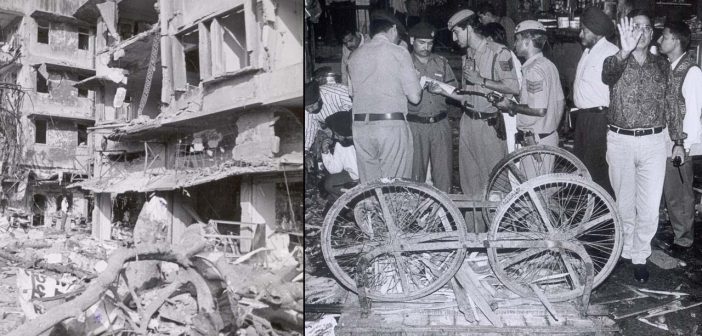A wave of bomb hoaxes has swept across North India, particularly Delhi, causing widespread panic and raising chilling parallels to the events leading up to the horrific 1993 Mumbai terror attacks. Schools, hospitals, and even a major transportation hub – the Indira Gandhi International Airport – have all been targeted, prompting comparisons to the pre-1993 bombings that served as a test run for the larger attacks.
A Chronology of Fear:
- Early May: Over 150 schools in Delhi-NCR received bomb threats via email, leading to mass evacuations and a significant deployment of security forces.
- Mid-May: Similar emails targeted eight hospitals in Delhi, causing further panic and forcing evacuations of patients and staff.
- Late May: IndiGo flight 6E2211, departing Delhi for Varanasi, was grounded due to a bomb threat received via a note found in the lavatory. The aircraft was isolated, passengers evacuated, and a thorough inspection conducted. Thankfully, no explosives were found.
Similarities to the 1993 Mumbai Blasts: Testing the Waters?
The recent string of hoaxes in North India evokes a sense of déjà vu when compared to the events that unfolded in Mumbai before the devastating 1993 terror attacks. While the motives behind the current hoaxes remain unclear, the similarities in tactics are undeniable:
-
Widespread Targets: Both the recent hoaxes and the pre-1993 bombings targeted a diverse range of locations, including schools, hospitals, and key infrastructure like airports. This tactic allows attackers to assess the response capabilities of law enforcement and emergency services across various sectors.
-
Low-Tech Methods: Both scenarios relied on relatively simple methods to create panic – emails and phone calls in the recent case, and anonymous calls in the pre-1993 instance. This suggests a focus on overwhelming the system rather than deploying sophisticated weaponry.
-
Psychological Impact: The primary goal of both the hoaxes and the pre-1993 bombings appears to be creating widespread fear and disruption. This can be seen as a way to test public panic and measure the effectiveness of spreading fear as a weapon.
Motives: Testing Vulnerabilities or Attention Seeking?
While a definitive link between the recent hoaxes and potential future attacks cannot be established at this point, the historical context of the pre-1993 Mumbai blasts suggests a possible link to terrorist activity. In the 1993 case, the bombings were later revealed to be a dry run conducted by terrorists to assess the preparedness of authorities.
Here’s a breakdown of the potential motives:
-
Pre-Attack Assessment: Terrorist groups might use hoaxes to evaluate response times, communication protocols, and the overall effectiveness of bomb disposal squads and other first responders. This information could be used to plan and execute a larger attack.
-
Attention Seeking: While the current hoaxes could be attention-seeking acts by individuals, the widespread nature and diverse targets suggest a more calculated approach, potentially aimed at garnering notoriety for a cause or ideology.
The Need for Vigilance
Regardless of the motive, the recent hoaxes expose vulnerabilities and highlight the importance of vigilance. Here’s what needs to be done:
-
Improved Threat Analysis: Law enforcement agencies should analyze these hoaxes in the context of past terror activities to identify potential patterns and assess the risk of future attacks.
-
Enhanced Training: Regular training exercises simulating large-scale bomb threats can help first responders hone their skills and improve overall coordination in case of a real event.
-
Public Awareness: Educating the public on how to identify and report suspicious activity, including bomb hoaxes, can empower citizens to play a role in keeping their communities safe.
Conclusion:
The recent spate of bomb hoaxes in North India serves as a stark reminder of the need for constant vigilance. While the current situation may not be a repeat of the pre-1993 Mumbai attacks, the similarities in tactics warrant a thorough investigation and improved preparedness measures. By taking these steps, authorities can ensure they are well-equipped to handle any potential threats and keep citizens safe.





